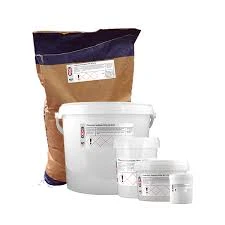
Exploring the Origins and Uses of Monosodium Glutamate in Food Industry
The Source and Significance of Monosodium Glutamate
Monosodium glutamate (MSG) is a flavor enhancer that has garnered both acclaim and controversy since its introduction to the culinary world. Its source, chemical composition, and use in food have sparked discussions around its safety and culinary application. Understanding the origins of MSG can shed light on its role in modern cuisine.
The Origins of MSG
MSG is the sodium salt of glutamic acid, an amino acid that occurs naturally in many foods, including tomatoes, cheese, and mushrooms. The history of MSG dates back to 1908 when Dr. Kikunae Ikeda, a Japanese chemist, identified it as the compound responsible for the umami taste—the fifth basic taste alongside sweet, sour, bitter, and salty. Dr. Ikeda extracted MSG from kombu, a type of seaweed highly prized in Japanese cooking, marking the beginning of commercial MSG production.
Initially, MSG was celebrated for its ability to enhance flavors without altering the inherent taste of food. The compound quickly gained popularity, especially in Asian cuisines, where it was utilized in soups, broths, and sauces to intensify the natural flavors. Today, MSG is produced through fermentation processes, utilizing starches from sugar beets, sugar cane, or corn. This method mimics the natural fermentation used in traditional Asian food preparation, making the production of MSG efficient and cost-effective.
Culinary Applications
MSG is predominantly utilized in the food industry as a flavor enhancer. It is commonly found in restaurants, packaged foods, snacks, and seasonings. The compound works by stimulating the taste buds specifically tuned to detect umami, enriching the overall flavor profile of dishes. It is especially prevalent in Asian cuisine, where it complements the taste of soy sauce, broth, and various meat dishes.
monosodium glutamate source

Interestingly, MSG's appeal extends beyond just improving taste; it also contributes to the eating experience. Many chefs appreciate its ability to elevate flavors without the need for excessive salt or fat, making it a valuable tool in the pursuit of umami-rich dishes. The versatility of MSG allows it to be used across a wide range of culinary traditions, bridging gaps between various cuisines.
Safety and Controversy
The use of MSG has not been without controversy. Over the years, some individuals have reported experiencing adverse reactions after consuming foods containing MSG, collectively termed Chinese restaurant syndrome. Symptoms may include headaches, flushing, and numbness. However, numerous scientific studies have failed to establish a definitive link between MSG and these symptoms in most individuals.
Regulatory bodies such as the U.S. Food and Drug Administration (FDA) and the World Health Organization (WHO) have classified MSG as safe for consumption. Comprehensive research supports the idea that, for the majority of people, MSG poses no health risks when consumed in normal amounts. Nevertheless, some individuals remain sensitive to MSG, necessitating caution and labeling in food products.
Conclusion
Monosodium glutamate is a fascinating compound with an interesting history rooted in its natural sources. Its ability to enhance flavor has positioned it as a staple in kitchens and food production settings around the globe. While debates surrounding its safety continue, the culinary benefits of MSG cannot be overlooked.
As the world progresses, culinary trends evolve, yet the quest for umami remains a constant in cooking. With MSG's ability to unlock flavors and its affordability as a seasoning, it is likely to remain a favorite among chefs and home cooks alike for years to come. Understanding its origins and applications can help individuals appreciate the complexities of flavor in their daily meals while navigating the ongoing conversation about food additives in general.
-
Understanding Synthetic Rubber OptionsNewsApr.27,2025
-
Trichloroisocyanuric Acid: Essential for Clean and Safe WaterNewsApr.27,2025
-
Sodium Dichloroisocyanurate: Key to Safe Water TreatmentNewsApr.27,2025
-
Sodium Acid Pyrophosphate: Essential in Modern Food ProcessingNewsApr.27,2025
-
Essential Water Treatment ChemicalsNewsApr.27,2025
-
Denatured Alcohol and Its Industrial UsesNewsApr.27,2025
-
The Versatile Uses of Sodium BicarbonateNewsApr.24,2025
Hebei Tenger Chemical Technology Co., Ltd. focuses on the chemical industry and is committed to the export service of chemical raw materials.
-

view more DiethanolisopropanolamineIn the ever-growing field of chemical solutions, diethanolisopropanolamine (DEIPA) stands out as a versatile and important compound. Due to its unique chemical structure and properties, DEIPA is of interest to various industries including construction, personal care, and agriculture. -

view more TriisopropanolamineTriisopropanolamine (TIPA) alkanol amine substance, is a kind of alcohol amine compound with amino and alcohol hydroxyl, and because of its molecules contains both amino and hydroxyl. -

view more Tetramethyl Thiuram DisulfideTetramethyl thiuram disulfide, also known as TMTD, is a white to light-yellow powder with a distinct sulfur-like odor. It is soluble in organic solvents such as benzene, acetone, and ethyl acetate, making it highly versatile for use in different formulations. TMTD is known for its excellent vulcanization acceleration properties, which makes it a key ingredient in the production of rubber products. Additionally, it acts as an effective fungicide and bactericide, making it valuable in agricultural applications. Its high purity and stability ensure consistent performance, making it a preferred choice for manufacturers across various industries.











